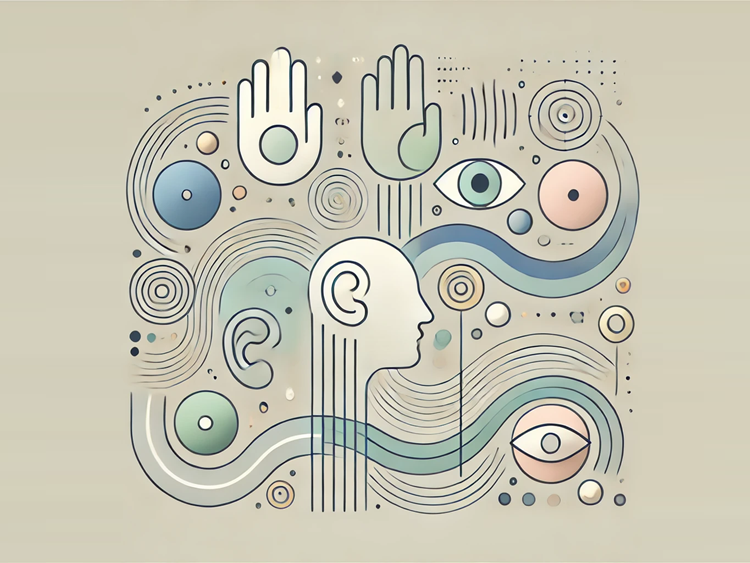Sensory Integration Therapy

Sensory Integration Therapy
Introduction
Sensory Integration Therapy (SIT) is a therapeutic approach used to help individuals, especially children, who have difficulties processing sensory information. It involves engaging children in activities that are designed to regulate their sensory systems and improve their ability to process and respond to sensory stimuli. This type of therapy is particularly beneficial for individuals with sensory processing disorders, autism, ADHD, and other neurodevelopmental conditions.
Scheduling: How much time do you need?
The duration and frequency of Sensory Integration Therapy vary depending on individual needs. Typically, sessions last about 30 to 60 minutes and occur one to three times a week. Some children may require more frequent sessions, especially at the beginning of therapy, to build familiarity and improve sensory processing skills.
Pros & Cons
Pros
- Helps improve sensory processing abilities, allowing better responses to sensory stimuli.
- Can reduce anxiety and improve attention and focus, especially in children with autism or ADHD.
- Improves motor skills and coordination through targeted activities.
- Creates a fun and engaging environment for children to develop crucial skills.
Cons
- Results may take time to manifest, requiring long-term commitment.
- Not all children may benefit from the therapy equally.
- Sessions can be costly, particularly over an extended period.
- Requires a certified therapist to conduct the therapy, limiting accessibility in some regions.
Target Audience: Who can benefit?
Sensory Integration Therapy is primarily aimed at children with Sensory Processing Disorder (SPD), but it can also be beneficial for individuals with:
- Autism Spectrum Disorder (ASD)
- Attention Deficit Hyperactivity Disorder (ADHD)
- Developmental Coordination Disorder (DCD)
- Anxiety disorders
- Learning disabilities
- Children with behavioral issues related to sensory processing difficulties
Type of Sensory Integration Therapy: What to do?
Sensory Integration Therapy includes a wide range of activities tailored to the individual's sensory needs. Common activities include:
- Using swings, balance boards, and trampolines to enhance vestibular input.
- Engaging in deep pressure activities, like squishing pillows or weighted blankets.
- Textural play using sand, water, rice, or clay to stimulate tactile senses.
- Targeted visual stimulation through light or color-based activities.
- Auditory training through specific sound therapy techniques.
Sensory Integration Curriculum: How to do?
The Sensory Integration Therapy curriculum is highly individualized, based on assessments done by certified therapists. It usually follows these steps:
- Initial assessment: Understanding the child's sensory challenges.
- Developing a personalized intervention plan based on specific sensory needs.
- Engaging the child in playful yet structured activities that stimulate the sensory system.
- Tracking progress and adjusting the activities as the child's sensory responses improve.
Sensory Integration Techniques:
- Wilbarger Protocol (Brushing Therapy): Developed by Patricia Wilbarger, this method involves using a soft surgical brush to apply deep pressure to the skin, followed by joint compressions. Aimed at reducing sensory defensiveness and regulating sensory input. Typically applied several times a day under the guidance of a trained therapist.
- Deep Pressure Touch Stimulation (DPTS): Uses firm, consistent pressure to calm the nervous system through tools like weighted blankets, vests, or hands-on pressure. Benefits include reducing anxiety, improving focus, and regulating sensory input.
- Therapeutic Listening: Uses specially designed auditory programs to stimulate the auditory system. Enhances attention, auditory processing, and sensory modulation.
- Swinging and Vestibular Activities: Involves activities like swinging or rocking to stimulate the vestibular system, improving balance, coordination, and calming the nervous system. Movement type (linear, rotary) is tailored to achieve either calming or alerting effects.
- Proprioceptive Input: Activities like pushing, pulling, lifting, or carrying heavy objects to give feedback to muscles and joints. Enhances body awareness, motor planning, and sensory regulation.
- Sensory Diet: A customized plan of sensory-based activities designed to provide the right amount of sensory input throughout the day. May include tasks like brushing, heavy work, and movement to regulate energy and focus.
- Therapeutic Tactile Play: Introduces different tactile experiences such as playing with sand, water, rice, or textured toys. Especially useful for individuals with tactile defensiveness, helping them become more comfortable with various textures.
- Weighted Therapy Tools: Use of weighted items like blankets, vests, or lap pads to provide deep pressure and proprioceptive input. Supports calming, focus, and sensory regulation for people with sensory processing challenges.
- Oral Sensory Input: Activities focused on oral-motor stimulation such as chewing crunchy foods, sucking, or blowing activities. Helps organize and regulate the nervous system and is particularly useful for those with oral sensitivities.
- Visual Stimulation and Visual Motor Integration: Engages the visual system through activities like tracking objects, puzzles, or working with light-based tools. Enhances visual processing, hand-eye coordination, and spatial awareness.
- Qigong Massage: A traditional Chinese massage technique adapted for children with sensory processing challenges, including those with autism. Involves gentle, rhythmic tapping, rubbing, and pressing along energy pathways (meridians) to improve sensory integration and calm the nervous system. Known for reducing sensory sensitivities and promoting emotional regulation through its impact on both the body and mind. Usually practiced daily by parents or caregivers under the guidance of a trained therapist.
Sensory Assessments Types
Sensory Integration Therapy begins with thorough assessments to understand a child's specific sensory challenges. Some commonly used assessment tools include:
- ADOLESCENT/ADULT SENSORY PROFILE: Promotes self-evaluation of behavioral responses to everyday sensory experiences.
- ASSESSMENT OF MOTOR AND PROCESS SKILLS (AMPS): An observational assessment evaluating motor and process skills during daily activities.
- BAYLEY SCALES OF INFANT DEVELOPMENT (BSID): Identifies developmental competencies in very young children across five domains.
- BEERY-BUKTENICA DEVELOPMENTAL TEST OF VISUAL-MOTOR INTEGRATION (BEERY VMI): Measures visual and motor abilities integration, often used for children.
- DEVELOPMENTAL TEST OF VISUAL PERCEPTION (DTVP-2): Assesses visual perception deficiencies in children.
- EVALUATION TOOL OF CHILDREN'S HANDWRITING: Evaluates cursive and manuscript handwriting for children in 1st–6th grades.
- HAWAII EARLY LEARNING PROFILE (HELP): Used for infants and toddlers to identify needs and track development.
- INFANT-TODDLER SENSORY PROFILE (SENSORY PROFILE 2): A caregiver-completed questionnaire evaluating a child’s sensory processing abilities.
- MILLER ASSESSMENT OF PRESCHOOLERS (MAP): Evaluates preschoolers for developmental delays in sensory, motor, and cognitive abilities.
- MOTOR-FREE VISUAL PERCEPTION TEST (MVPT): Standardized test assessing visual perception independent of motor ability.
- PEABODY DEVELOPMENTAL MOTOR SCALE (PDMS-2): Assesses motor skills in young children, comparing them to norms.
- PEDIATRIC EVALUATION OF DISABILITY INVENTORY (PEDI): Assesses and tracks functional performance in children.
- SCHOOL FUNCTIONAL ASSESSMENT (SFA): Measures elementary school students' functional tasks in an academic setting.
- SENSORY INTEGRATION AND PRAXIS TESTS (SIPT): Measures sensory integration processes underlying learning and behavior.
- BRUININKS-OSERETSKY TEST OF MOTOR PROFICIENCY, SECOND EDITION (BOT-2): Measures motor skills in individuals aged 4–21.
- VINELAND ADAPTIVE BEHAVIOR SCALES (VINELAND-II OR VABS): Measures adaptive behavior from birth to age 90.
References: Who talks about it?
Sensory Integration Therapy has been researched and endorsed by many professionals in the field of occupational therapy. Some key references include:
- Dr. A. Jean Ayres, the pioneer of Sensory Integration Therapy, who developed the Ayres Sensory Integration (ASI) approach.
- The American Occupational Therapy Association (AOTA) offers guidelines and resources on sensory integration.
- Research articles and studies from the Journal of Occupational Therapy discuss the efficacy of sensory integration interventions for children with autism and SPD.
Cost: How much do you need to spend?
The cost of Sensory Integration Therapy can vary widely depending on the region, therapist, and frequency of sessions. In the UAE, typical rates for sensory therapy sessions range between AED 300 and AED 600 per session. Over time, if a child requires multiple sessions per week, this can accumulate to AED 1,200 to AED 2,400 per week. Long-term therapy can thus be a significant investment for families, but some insurance providers may offer partial coverage.
